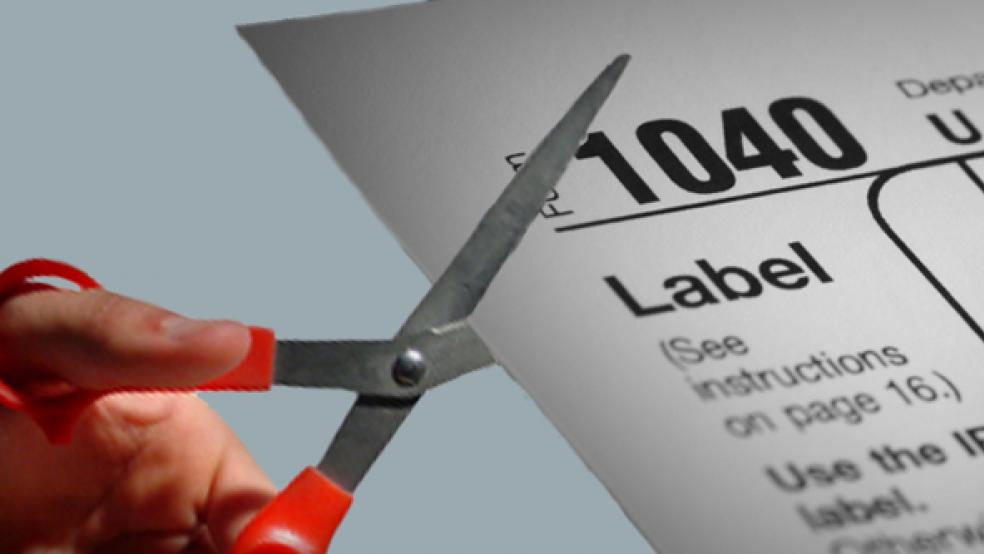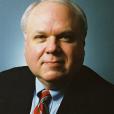On Tuesday, House Budget Committee Chairman Paul Ryan (R-WI) introduced a budget for fiscal year 2013. It proposes massive changes not merely in the path of federal spending, but the very nature of government and society. There is too much in it to analyze in one column, so I want to focus on one aspect: tax policy.
.The chapter on taxes in Ryan’s proposal is mostly a rather banal rehash of well-known problems with the tax code: it’s too long, too complex, etc. It then jumps to a two-page summary of his proposed reform: reduce the top individual income tax rate and the corporate tax rate from 35 percent to 25 percent, have just one other tax bracket of 10 percent, repeal the Alternative Minimum Tax, and shift the corporate income tax from a worldwide system to a territorial system.
There are virtually no details. For example, we have no idea what income level the new tax brackets would apply to. Consequently, it is impossible to score the Ryan plan accurately. The Tax Policy Center took a stab at it by assuming that the current 10 percent bracket would stay the same and the 15 percent bracket would be abolished, as well as all rates above the current 25 percent bracket. It estimates that this provision would reduce revenues by $2.5 trillion over the next 10 years. The total revenue loss of all provisions would be $4.6 trillion.
Ryan offers only the sugar of rate reductions without telling us what the medicine of base broadening will be.
Another key part of the Ryan plan is a broadening of the tax base to recoup some of the revenue lost from cutting tax rates. Base broadening could be accomplished by abolishing or limiting the use of tax deductions and exclusions that reduce the amount of income subject to tax. According to the Tax Policy Center, the total amount of such “tax expenditures” is about $1.1 trillion this year.
Ryan says nothing whatsoever about what tax expenditures he would abolish. He offers only the sugar of rate reductions without telling us what the medicine of base broadening will be. Ryan says only that he would broaden the base sufficiently so that federal revenues will be in their historical range of 18 percent to 19 percent of the gross domestic product. Revenues will be 16.3 percent of GDP this year according to the Congressional Budget Office. Ryan is therefore presupposing a tax increase of 1.7 percent to 2.7 percent of GDP.
Any tax reform plan that simply asserts it will collect a certain percentage of GDP in revenues while specifying the rate structure but not defining the tax base is fundamentally dishonest, in my opinion. The CBO was simply ordered to assume that Ryan’s numbers are legitimate. For the sake of argument, I will make the same assumption.
So how many tax expenditures would have to be eliminated for Ryan’s revenue assumption to come about? This can perhaps be seen by looking at his plan in terms of percentages of GDP. According to CBO, which is required to assume current law in its projections, federal revenues will average 20.4 percent of GDP over the next 10 years. This results primarily from allowing all tax cuts to expire on schedule. If all the tax cuts were extended indefinitely, revenues would average 17.7 percent of GDP.
According to TPC, revenues would only average 15.4 percent of GDP under Ryan’s plan without considering any base broadeners. Therefore, he will have to eliminate enough tax expenditures to raise revenues by between 2.6 percent and 3.6 percent of GDP. With the total amount of tax expenditures equaling 7.3 percent of GDP, according to TPC, Ryan would have to reduce them by about 50 percent.
It will be impossible to achieve Ryan’s revenue target without essentially wiping the slate clean of every tax preference except for a handful of the most popular ones.
Of course, it is impossible to know what tax expenditures Ryan plans to eliminate; we can only guess. But it is worth knowing that just the top 6 tax expenditures account for more than half of the dollar cost of all tax expenditures. These include the exclusion for health insurance and the deduction for mortgage interest. Among those not in the top 6 are the deduction for charitable contributions and the deduction for state and local taxes.
In other words, it will be impossible to achieve Ryan’s revenue target without pretty much wiping the slate clean of every tax preference except for a handful of the most popular ones. This may be worth doing, but will be very difficult. The Tax Reform Act of 1986 reduced tax expenditures by about 2.7 of GDP, according to the TPC. If it could be duplicated, that would only get Ryan to his absolute minimum level of revenues as a share of GDP. Getting to the upper end of his target range would require a tax reform one third larger.
Ryan has an undeserved reputation for seriousness in budget matters. The word “fantasy” would better apply.
In short, looking only at the tax side of Ryan’s plan, he is anticipating enactment of an extraordinarily ambitious tax reform on top of the most ambitious budget cutting effort ever enacted. He would sharply cut outlays for every major program except Social Security and national defense. Every governmental function one can think of would be virtually abolished except for Medicare, Social Security and defense. A key reason for the severity of these cuts, of course, is that Ryan would cut taxes at the same time he is cutting spending. To achieve balance with lower than projected revenues requires even larger cuts in spending.
I do not believe any of this will ever happen or could ever happen. I think Ryan has an undeserved reputation for seriousness in budget matters. The word “fantasy” would better apply. As Prof. Calvin Johnson of the University of Texas law school told me, the tax side of Ryan’s plan “is floating in the clouds without any connection to earth or reality.” And of course accomplishing what he hopes to do on the spending side is even more fanciful.
In my opinion, the Ryan budget should be seen as nothing more than a PR document for Republicans so they can say they have a plan to balance the budget, cut taxes, and cure the common cold. It may serve that narrow purpose, although many Republicans are saying that it doesn’t go far enough in slashing spending. I wish I could buy some of the stuff these guys are drinking or smoking.
Anyone can make up numbers that balance the budget while slashing taxes at the same time if they have no concern whatsoever for the proper functioning of government, no concern for the hardship it would cause, and are in a position to order the CBO to accept those numbers at face value. Coming up with specific legislative changes that will actually implement such a vision, getting it enacted, and accepting the consequences is something else altogether.






